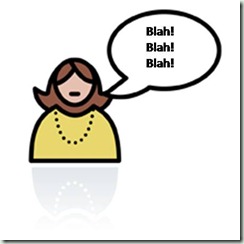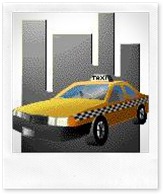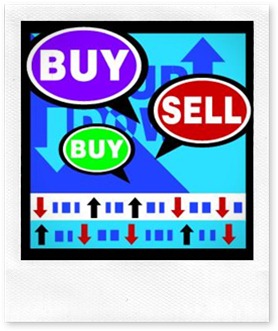Entries Tagged 'copywriting tips' ↓
March 1st, 2010 — copywriter, copywriting tips, freelance copywriter, script writing

As a copywriter I am normally involved in writing copy for printed or online media. However I and currently working on project that involves creating scripts for podcasts. The series is designed to teach staff how to effectively use an internal piece of software.
I’m writing this post to highlight the differences between writing for spoken word and the written word.
If you are creating a piece of copywriting that is designed to be read (such as website copy, brochure, email etc.) you will write in a completely different style than if you were writing a script.
So why are these two techniques so different?
Written copywriting
Written copy is something physical. It appears before your reader and can be read and re-read as many times as they want. If you have a complex sentence within the copy and the reader loses their way, they can go back over it again to make sense of it.
Although your written copy should be simple, it has the luxury of being there to be read again and again. It can be passed on to others and referred back to when necessary. It is a form of reference material that is ever present.
Written copy tends to use full words rather than contractions. You tend to see “you will” rather than “you’ll” so it takes one a slightly more formal tone than spoken language.
Spoken copywriting
In contrast, copy for the spoken word utilises contractions, simple words and sentence structures.
The spoken word is transient – once it’s been spoken it’s gone. If you use complex sentences within your copy not only does it make it difficult for the voice-over artist, but if your listener also loses their way, they have no way of returning to the copy to work out what you were trying to say.
Frequently when writing scripts, the script will go before several people before being finally agreed. This can cause a “Chinese Whispers” effect as more and more people have input. Different voices begin to appear; people lose sight of the fact that this is supposed to be spoken and not read.
Therefore it is vital to always ensure everyone involved with the process understands the aim of the script, who will be listening and that they are constantly reminded that this is spoken language.
You should actively use informal language (within reason so it fits within the company’s brand and image) – write as you would speak. When you’ve completed an initial draft of your script read it out loud. Are there any sections that sound ungainly? Is it easy to follow? Do you run our of breath reading long sentences? These are all questions that should be constantly in your mind as you review your work.
Golden rules to remember
So next time you are involved in script writing remember:
- Keep your sentence form simple
- Use simple language
- Use contractions as you would when speaking naturally
- Make sure the information is imparted simply
- Read it out loud – if you run out of breath or lose your way, so will your listener
If you bear these 5 points in mind when you write the spoken word, your copywriting will flow, be easy to understand and accessible to your listeners.
Sally Ormond – freelance copywriter
February 24th, 2010 — copywriter, copywriting tips, freelance copywriter, sales writing

As a copywriter, when I talk about sales copy I tell people to concentrate on the benefits.
After all, it is the benefits of your product or service that prospects want to know about as they will have a direct influence on their lives.
But if you’ve ever done any face to face selling you’ll also be aware of the other factors that you need to overcome – their reasons for not buying.
Sales literature is there to sell (no, really?), what’s more everyone knows that. Many people don’t like being sold to and so their guard is instantly raised when they read your letter, web page, brochure or other sales material.
Therefore you have to work out how to get round their objections.
Objection 1: “Too expensive”
Quite often this isn’t a genuine reason – it’s more of an excuse. A quick response that is supposed to get you running for the hills.
The best way round this objection is to show your product or service as an investment. The use of that word suggests there is a future pay back somewhere along the line.
You can do this by highlighting its benefits – how much money they’ll save or how much they’ll make.
Objection 2: “I don’t really need it”
Oh boy, now you’ve got some work to do.
If this objection is thrown at you it means one thing – you haven’t sold the benefits of your product well enough.
Go back over your website copy – have you told them what’s in it for them? Have you shown all the benefits. Make sure you haven’t confused your features with your benefits.
Is the copy talking to them? Does it evoke an emotional response? Have used a story to illustrate how it will benefit them in real life?
If your copy is benefits lead it should blow this objection clean out of the water because it will show them exactly why they need it.
Objection 3: “Hmmm, not sure. I need to talk to someone about it.”
Ah, the delaying tactic.
The best way to get round this one is by having a limited offer – it could be time limited (i.e. the special price is only available for the next 14 days), limited in number (i.e. only 5 left) etc.
No one likes to think they are missing out.
Of course the other way round this is by providing testimonials or case studies. By having real life examples of how your product has helped people will strengthen your sales message. They won’t need to talk to someone else when they have testimonials in front of them.
Being prepared is always having an answer
These three objections are the main ones you’ll come across. Head them off by ensuring your copy answers each of them.
The more objections you can satisfy the better. Utilise your experience – make a note of objections you come across and work solutions to these into your copy.
Sometimes, even though you’ve countered every argument someone can come up with, they still won’t buy. Sadly there is no known cure for stubbornness (yet).
February 22nd, 2010 — copywriter, copywriting tips, freelance copywriter, website copywriting

Those immortal words were famously uttered by Travis Bickle (Robert De Niro) in the 1976 classic, “Taxi Driver”.
This post isn’t about that particular iconic film though. Rather, I want to talk about your website copywriting and how it should be written to gain the greatest effect.
Who do you want to read your website?
This is a topic that I have touched on in the past but it is so important, I’m going to talk about it again.
You might think it an odd question – “who do you want to read your website?” – but it isn’t really.
Look at it another way – what do you want your website to do?
Hopefully you answered “sell” or perhaps “generate enquiries”. But you will only do that if your website copy talks to your reader. Think back to the last networking event you went to. No doubt someone came up and introduced themselves to you and launched into their elevator pitch. What would you find most interesting? Someone who says:
“I’m John, I sell websites. My websites have state of the art features and they look great. They are really eye catching and I work with clients all over the country. I can create ecommerce sites, flash sites and just about anything else you can think of. My company is called Websitearama, this is my card, look me up.”
Lost the will to live yet? I’m guessing that you have now made your excuses and left John to find another victim to bore.
But what if John had said this?
“Hi, I’m John and I can help your website attract targeted traffic that will generate a constant stream of sales. With our software you’ll never lose a sale because it will automatically follow up every lead. You will no longer be walking away from business because you don’t have time to keep in touch with all your prospects – your website software will do it for you.”
In the first scenario John bangs on about his company. At no point does he even attempt to say how he can help his clients. His websites have state of the art features – so what? The are really eye-catching – so what?
But the second attempt starts to address his audience. His website attracts targeted traffic – so what? – so it generates a constant stream of leads. It follows up every lead automatically – so what? – so you’ll never lose another sale.
This time John has qualified the benefits of his product by illustrating what that will mean to his clients.
So what’s all that got to do with websites?
When someone lands on your website they are there for a reason – they want to buy what you are selling.
To make yourself stand out from all the other websites, you have to make sure you give them what they want. If they land on your site only to read all about your company (an Ego website) they’ll get bored and move on.
But if your website copy addresses them directly and tells them what you will do for them, you’ll get their attention.
You
That is a word that should be littered throughout your web copy. By using “you” and “your” you are directly addressing your reader. You are involving them in your website and showing them precisely why they’ll benefit from your product/service.
Stating what your benefits are and what they’ll do for your reader will prevent them from saying those dreaded words:
“What’s in it for me?”
If they have to say that you’ve failed to get your message across clearly.
So next time you are writing your web copy make sure you banish “we” and replace it with “you”. By writing directly to your reader you’ll begin to write benefits driven copy that will sell. It may take a bit of practice but stick with it as it will pay off.
By the way, this is also true for your other sales materials.
Sally Ormond – freelance copywriter
February 19th, 2010 — copywriter, copywriting tips, direct mail campaign, direct response copywriting

Direct mail has been around for many years. Long before the internet was thought of letters would come crashing through your letter box promising all sorts of wonderful things.
It is one of those things you either love or hate. Personally I’m not a great fan but that is probably because I have seen so much bad direct mail.
Buy! Buy! Buy!
That is what immediately springs to mind whenever someone mentions direct mail.
There is so much today – on and off line – that shouts at you. Know what I mean? All those letters and landing pages that are a mix of fonts, font sizes, colours, bold text, underlining.
Why do it? Surely if your product is great and stands up on its own merits it doesn’t need all that fluff and decoration.
Surely concentrating on the benefits is the key. Tell me what it will do for me, how it will make my life better. Convince me of that and I’ll probably buy – if the price is right.
That’s another thing – the price.
Is the price right?
Only you know if the price you are asking is fair or not. When I say ‘is the price right’ I’m thinking more of where you’ve put it in your sales letter/landing page.
Often you’ll see it in the headline.
Only £5.99!
Great, but because you haven’t put forward your offer yet, what’s the point in thrusting the price at me? It is meaningless on its own.
It’s the same when the price precedes the benefits. You have to convince me that the benefits of your product are so strong I’ll want to buy it whatever the price.
Convince first, tell them the price later.
Forget the hype
Great swathes of writing going on and on and on about features, exaggerated claims and long winded testimonials can be a real turn off.
Yes, testimonials are strong but do you really need twenty of them?One or two persuasively written case studies would be far more powerful.
People today are very time limited. They don’t have hours or even minutes to waste wading through your longwinded letter or landing page.
If your offer demands longer copy, fine – so long as it is all relevant to your product. Long copy can be very effective when written well.
It’s very easy to write long copy badly – it’s not so easy to write good long copy.
Know who you are writing to
Another pet hate of mine is receiving direct mail that is of no interest to me whatsoever.
If you are sending off line direct mail make sure you do your market research well. There are three elements that make up a successful campaign:
- A great offer
- A great sales letter
- The right audience
Get any of those wrong and you’ll be doomed.
Even if you’ve slaved hours over your letter and written the strongest offer known to man, if you send it to a bad list you won’t get the return you are looking for.
There is money to be made
You’ve probably guessed by now that I’m not a great fan of this particular sales format. However as a copywriter it is something I am called on to do frequently for my clients.
Learning how to write it has been a long journey (it isn’t something you can pick up over night) and a tortuous one considering my feelings towards it.
But I quickly learnt that direct mail could be written without excessive hype, bold colours, odd fonts and flashing boxes (or those annoying pop-ups on landing pages that chase you round the screen asking if you are sure you want to leave the page).
So don’t be put off by my rant. Direct mail can and does work. There are many big corporations out there using is well. Its just a shame there are so many bad examples out there too.
What are your thoughts on it? Do you love it or hate it? It would be great to hear from you.
February 17th, 2010 — copywriter, copywriting tips, freelance copywriter, website copywriter

Before you run away screaming – this isn’t going to be a post that bangs on about how your business is in dire need of a freelance copywriter – oh, and I just happen to know one – me!
This is all about keeping your copywriting benefits driven.
Identify your benefits
You’re probably sat there now saying…
“What’s she on about, of course I know what the benefits of my product are.”
Are you sure about that?

Let’s take George here as an example. He runs a small business that sells recycled paper goods – things like gift bags, wrapping paper, envelopes etc.
All over his website he mentions that all his products are made from recycled paper and, of course, are also recyclable themselves.
Whoop-di-do, so what?
The fact that his products are made from recycled paper (and are recyclable) isn’t a benefit. It is a feature.
This is a mistake that is made on numerous websites.
If George came up to me and launched into his pitch this is probably how the conversation would go:
George: “You should buy my product because it’s made from recyclable materials”
Me: “So what?”
But, if he changed his approach and concentrated on the benefit, it would go something like…
George: “By buying my recycled product you will also have peace of mind that you are helping the environment and therefore helping us all to work towards a better world”
Me: “Wow, you’re right. I hadn’t thought of it like that.”
(a bit cheesy but you get my drift)
By immediately stating a benefit – i.e. what his product will do for me – he has shown that he understands my needs and has fulfilled them.
Your benefit could be like Georges’, or it could save your customer money, give them kudos, include them in a select community etc. What it comes down to is what your product will do for them – how it will change their lives for the better.
Get your benefits in fast
Once you’ve identified your benefits you have to get them in your web copy.
The most important information must go first so get your benefits in early. Within the first paragraph if you can.
It is the benefit that your reader is going to be looking for but they don’t want to have to work it out for themselves.
Spell it out to them so they trip over it. If you can identify more than one, put them in a bulleted list to draw attention to them.
Don’t be a wall flower – your benefits are what will sell your product so shout about them for all you’re worth.











